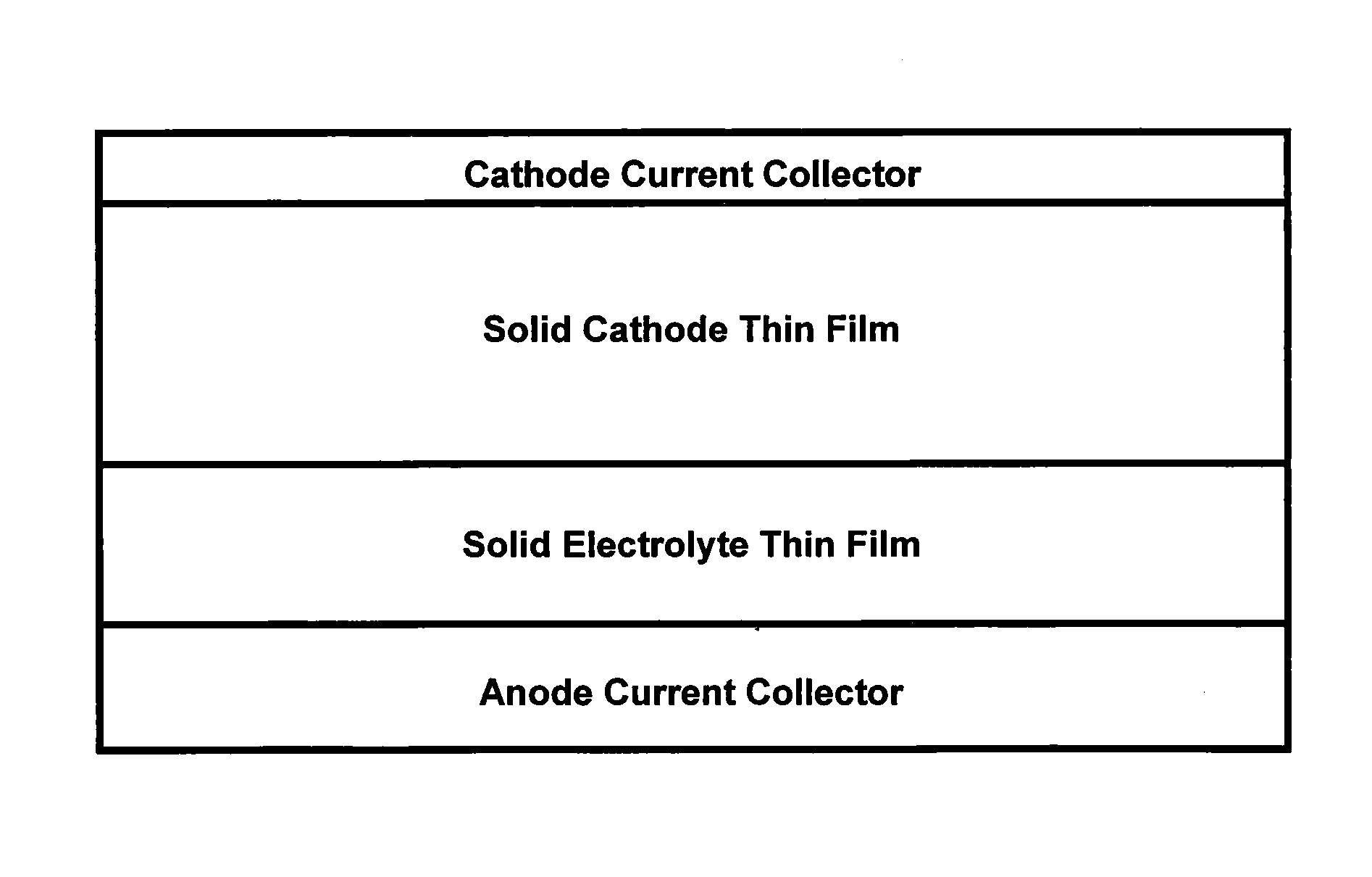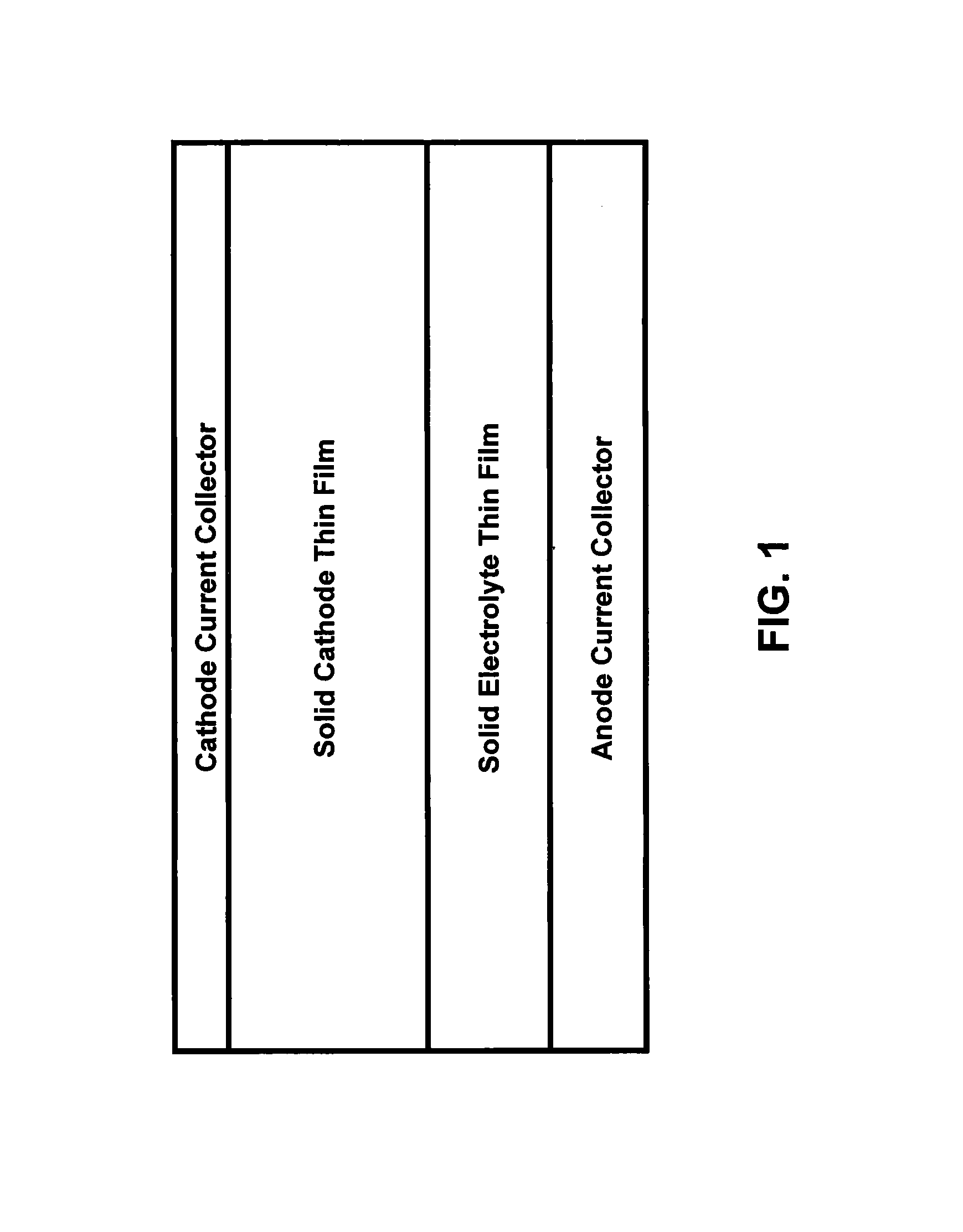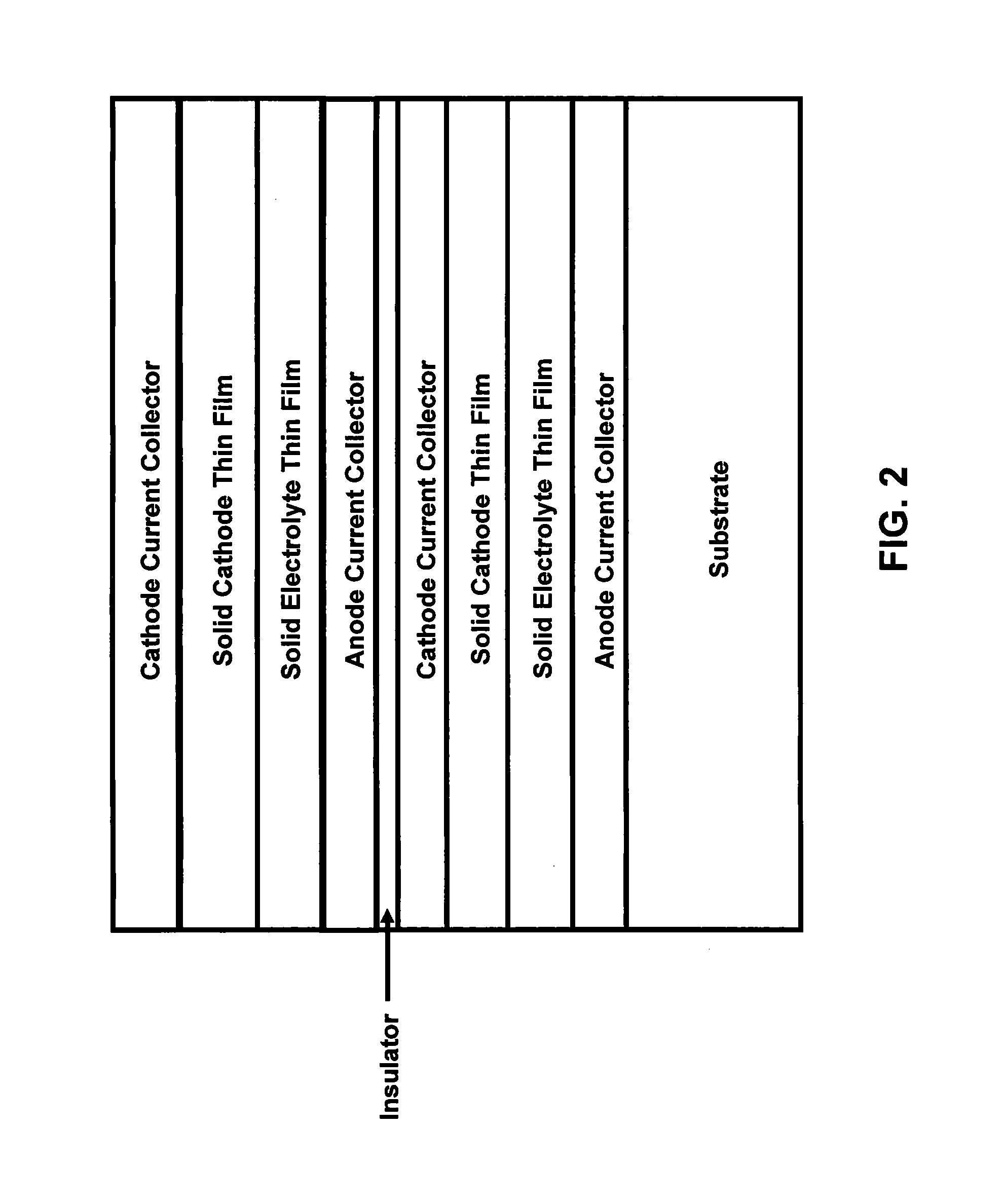Solid-state lithium battery
a lithium battery and solid-state technology, applied in the field of solid-state lithium batteries, can solve the problems of limiting the life-time of batteries, fracturing of films, heat transfer loss, etc., and achieve the effect of improving power over conventional materials and low form factor
- Summary
- Abstract
- Description
- Claims
- Application Information
AI Technical Summary
Benefits of technology
Problems solved by technology
Method used
Image
Examples
Embodiment Construction
[0027]As shown in FIG. 1, a solid-state lithium microbattery can comprise a thin film of a first nonaqueous material, such as copper or nickel, that functions as an anode current collector, upon which is deposited optionally a thin-film anode (not shown) comprising a nonaqueous material such as lithium or lithium titanate, upon which is a nonaqueous solid electrolyte thin film layer that comprises a lithium-rare earth metal-containing compound. A solid nonaqueous cathode thin film is layered on top of the electrolyte thin film layer, followed by a nonaqueous thin film cathode current collector, such as an aluminum layer. Optionally, a separator membrane (not shown) can be between layers, such as between the nonaqueous electrolyte thin film layer and the solid cathode thin film layer.
[0028]The anode current collector can comprise a thin film of copper or nickel that is in one embodiment approximately 0.2 to approximately 5 microns in thickness or in another embodiment a tape or foil ...
PUM
| Property | Measurement | Unit |
|---|---|---|
| crystallization temperature | aaaaa | aaaaa |
| crystallization temperature | aaaaa | aaaaa |
| decomposition voltages | aaaaa | aaaaa |
Abstract
Description
Claims
Application Information
 Login to View More
Login to View More - R&D
- Intellectual Property
- Life Sciences
- Materials
- Tech Scout
- Unparalleled Data Quality
- Higher Quality Content
- 60% Fewer Hallucinations
Browse by: Latest US Patents, China's latest patents, Technical Efficacy Thesaurus, Application Domain, Technology Topic, Popular Technical Reports.
© 2025 PatSnap. All rights reserved.Legal|Privacy policy|Modern Slavery Act Transparency Statement|Sitemap|About US| Contact US: help@patsnap.com



